Signs of Beavers ~ castor canadensis
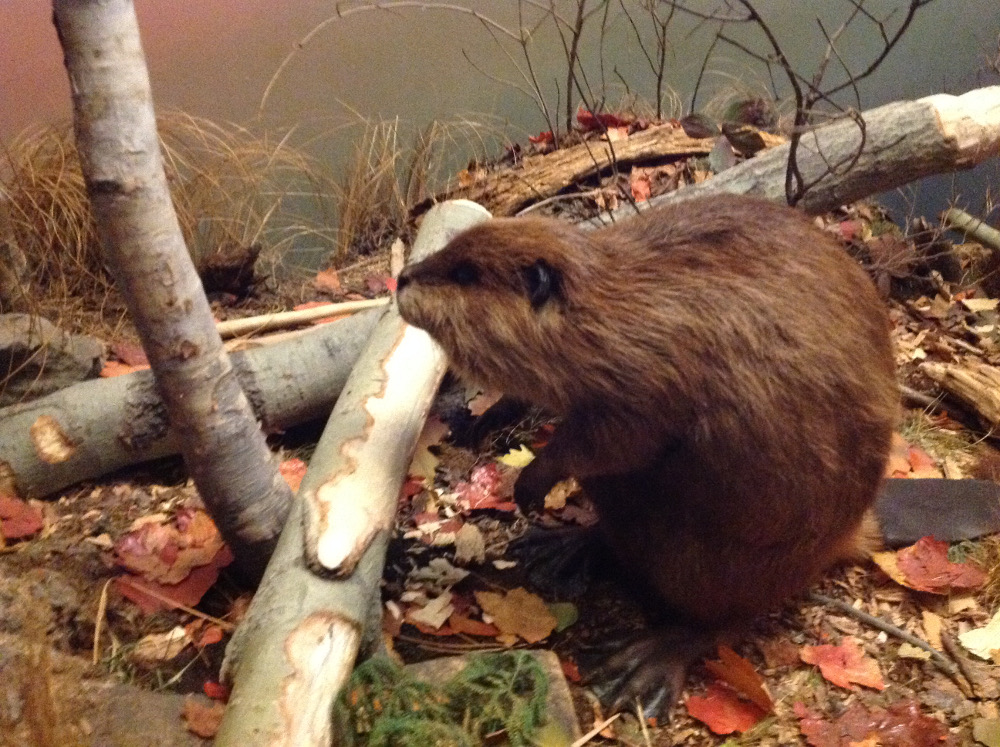
On a recent walk, we saw more signs of beavers than we had ever seen before. However, we didn't see any beavers because they are primarily nocturnal, so the photo above, is one I took of the Beaver diorama in the Ottawa Museum of Nature.
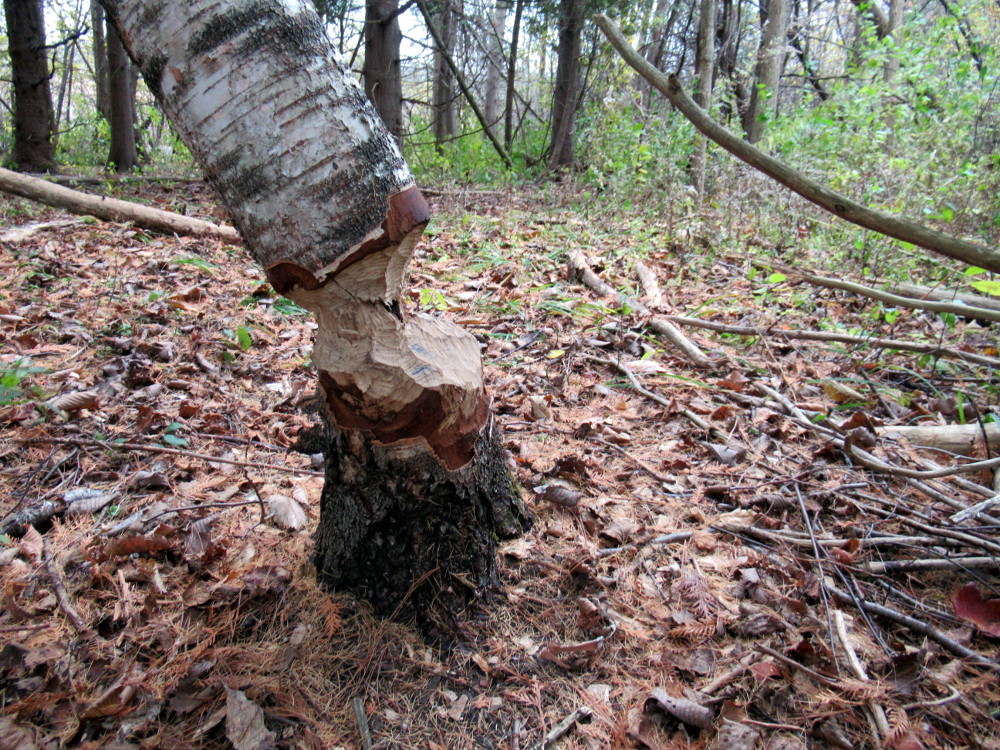
This is what we saw: Many, many beaver gnawed trees and stumps.
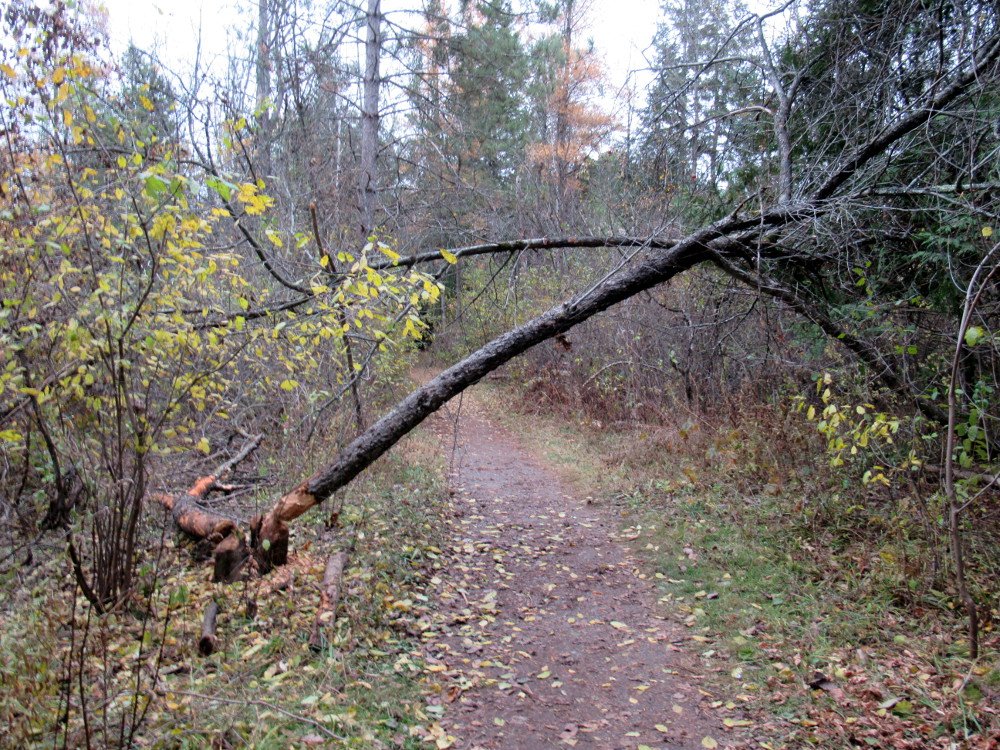
Beavers are the second largest rodent in the world and the largest in North America. They are well suited to their semi-aquatic life, with thick waterproof fur, webbed feet for swimming, a large flat tail that acts as a rudder, ears and nostrils they can close, and a transparent membrane over their eyes.
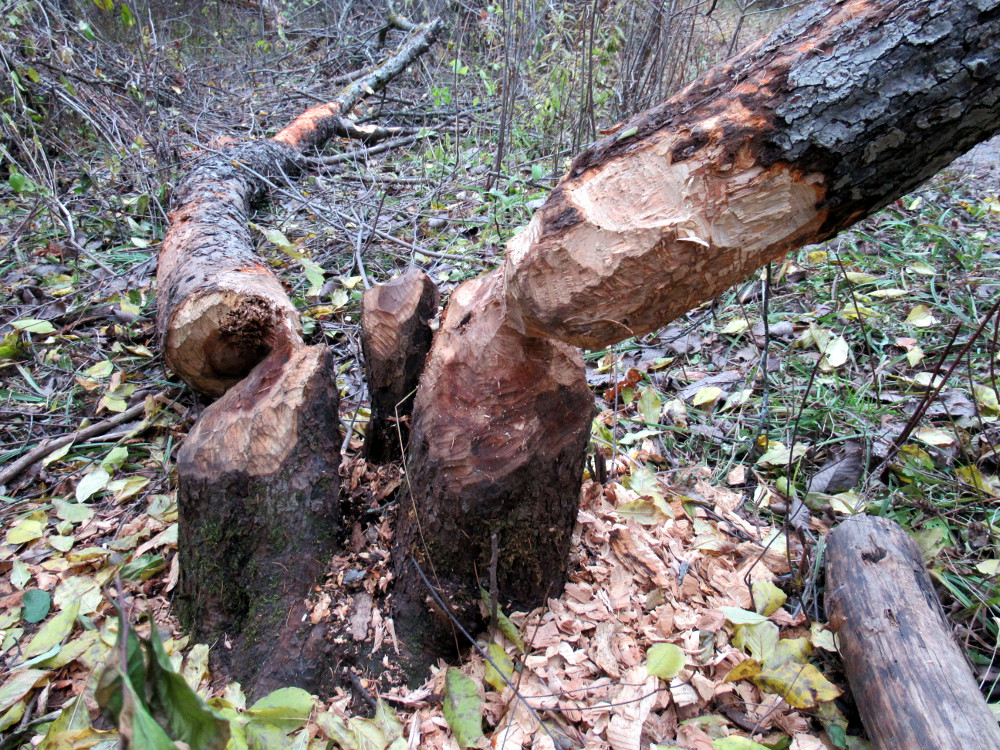
There is an amazing amount activity here and it's all pretty fresh.
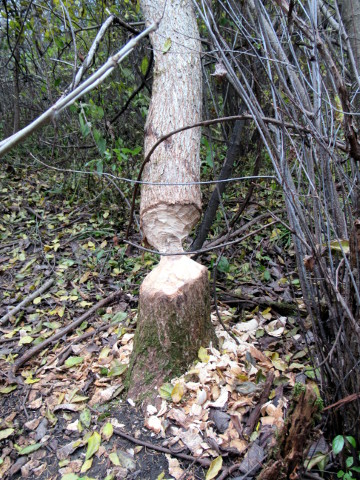
An adult beaver typically weighs 60 lbs (27 kilograms) and is 23-29 inches (60-100 cms) without the tail which adds another 7.75-12 inches (20-30.5 cms) to its length.
Historically, their range was most of North America from Northern Mexico to the edge of the Arctic Ocean. They are now extinct in Mexico and some US states.
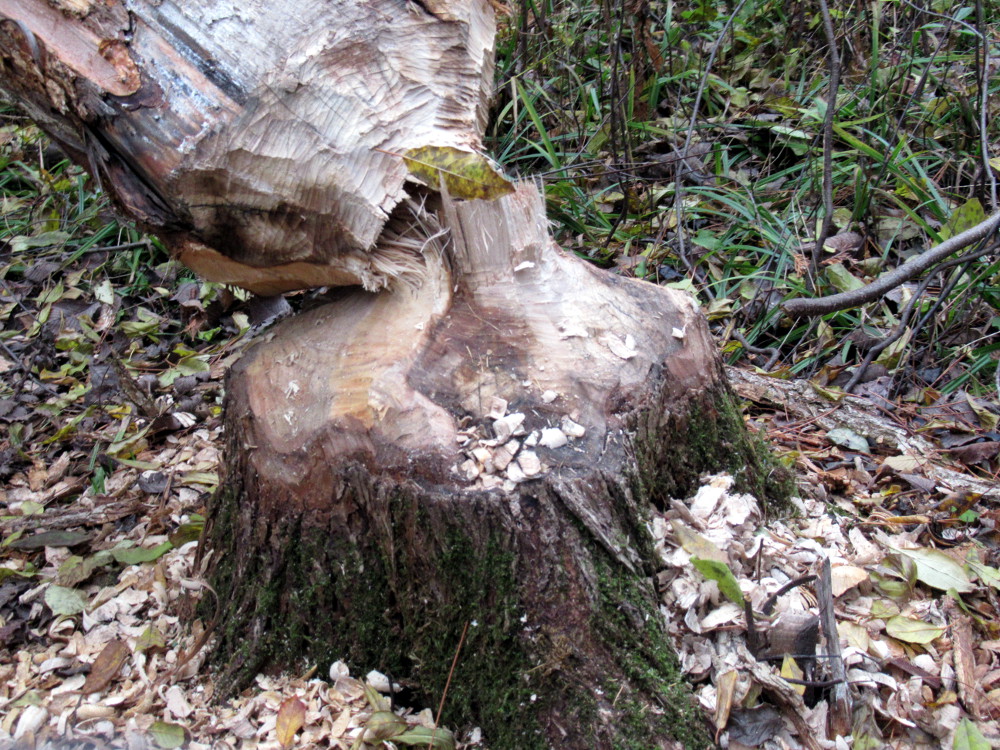
Inhabiting forested areas with streams or water courses bordered by deciduous trees, a family of beavers live in a lodge made of mud and sticks in a pond of their own making. They create it by cutting down trees to build a log and mud dam across the stream. On average, a beaver fells 216 trees per year using their intimidating .79-.98 inch (20-25 mm) long incisors.

The wood chips went across our path all the way to the water. It's unusual to see so many wood chips and we wondered if workers in the greenbelt had cleared a tree the beavers felled across the path.
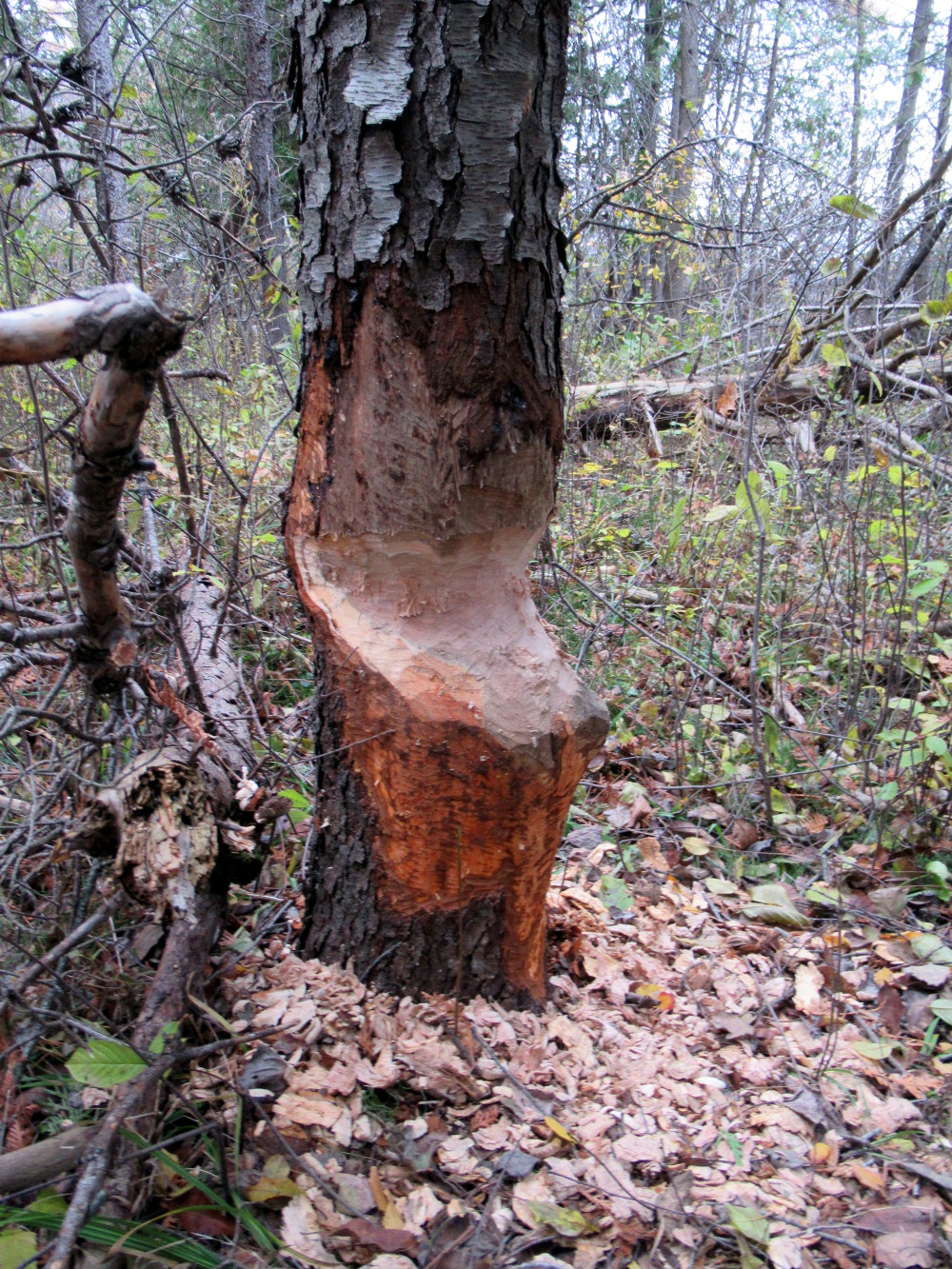
A beaver's teeth never stop growing. Chewing on tree trunks and branches help keep their teeth from getting too long.
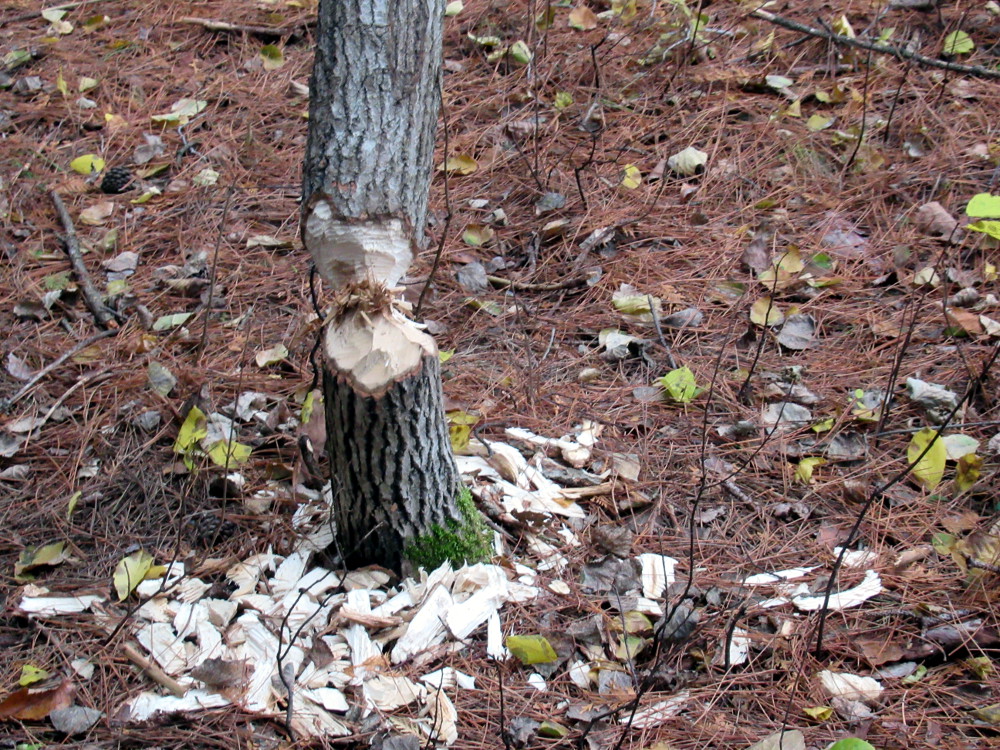
Beavers fell trees for two reasons; either to build and reinforce their dam or to store food for the winter. In winter, they eat the bark off of sticks they have stored in their underwater cache as well as the roots and stems of aquatic plants. In summer, they also eat grasses, leaves and fruit.
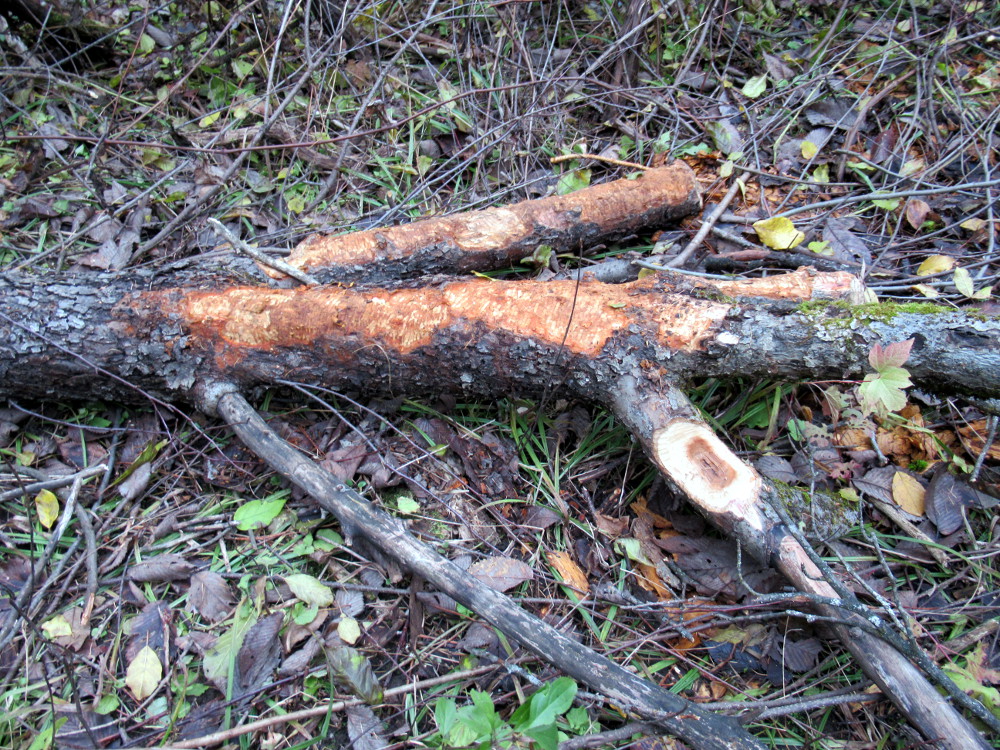
Young kits, born in April to June, are nursed by their mother and start to feed on branches and leaves when they are two to three weeks old. They stay in the same lodge as their parents until they are two years old. Above and below, they were obviously feeding.


The path ahead is occasionally closed for high water. Shhh...

From the boardwalk, right in front of us, is a very old dam. Really, unless you can see the water level on both sides, you wouldn't know that's what it is.
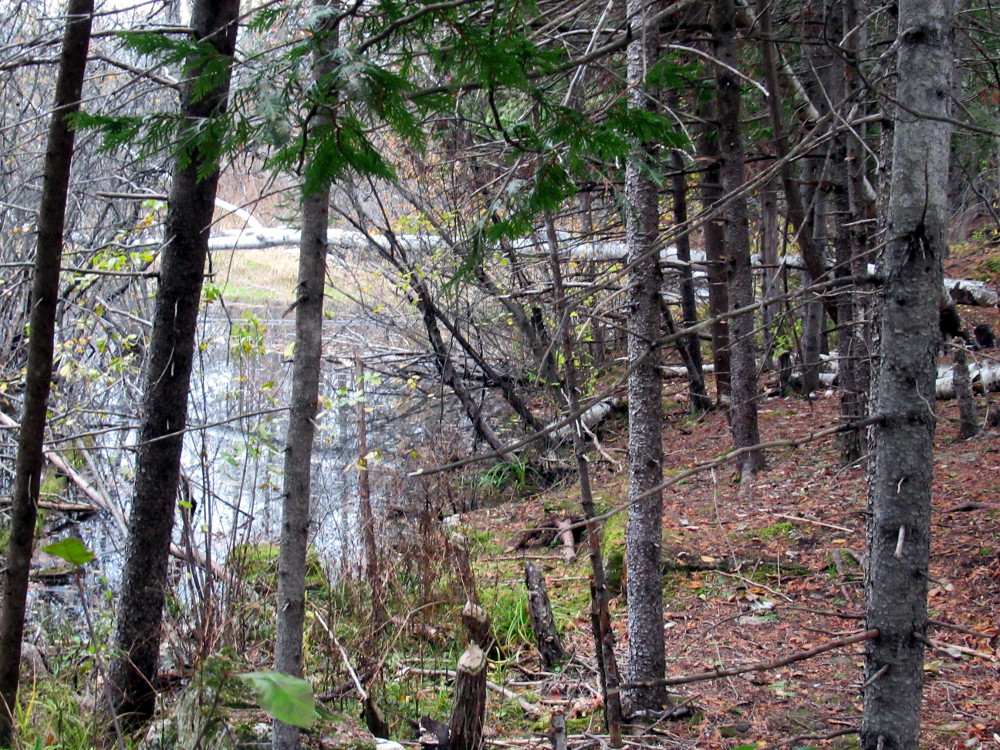
The beavers felled a tree into the water where they will strip the tender branches from its top in preparation for winter.

Beavers play a critical role in creating and maintaining healthy ecosystems. While they are beneficial to many other species, they can occasionally damage property.

Here at this lake in the greenbelt, it's a beaver's paradise.
References
Canadian Museum of Nature - Mammal Gallery
Canadian Wildlife Federation - Beaver
The Beaver and other Pelts
Images
First photo from my iPad in the Canadian Museum of Nature.
Other photos from my Canon SX620 HS on the Old Quarry trail in the Ottawa greenbelt.
The beaver ecosystem image is from Rewilding Europe.

Enjoy!
@kansuze
0
0
0.000
Your content has been voted as a part of Encouragement program. Keep up the good work!
Use Ecency daily to boost your growth on platform!
Support Ecency
Vote for Proposal
Delegate HP and earn more
Thank you!
We appreciate your work and your post has been manually curated by zoology team (oscurity,nelinoeva) on behalf of Amazing Nature Community. Keep up the good work!
Thank you!
Interesting post and info on the Beavers. I found what looks like a Beaver gnaw on my last woods walk. Haven't found what I would actually call "teh dam" yet, but I'm guessing they've built or are building a partial one on the stream running through our land. Never seen one in the wild yet, will definitely be looking around more and may setup a trail cam near the gnaws.
With the beavers, it will be near water. We saw other gnaw marks that had us wondering what they were. There were old decayed stumps completely destroyed while something presumably looked for grubs. I'm still looking into that... raccoons, porcupines, opossums, skunks, bears, who knows?
I've never seen beaver trees felled! I have not seen any signs of beavers here at all ...
I saw one freshly cut stump a week ago and then to suddenly see about 40 of them was pretty incredible.
Wow! 😯
nice photos and information
We appreciate your work and your post was manually curated by @none! from the DNA team!
Reach us on Discord to learn more about the project!
Thank you!